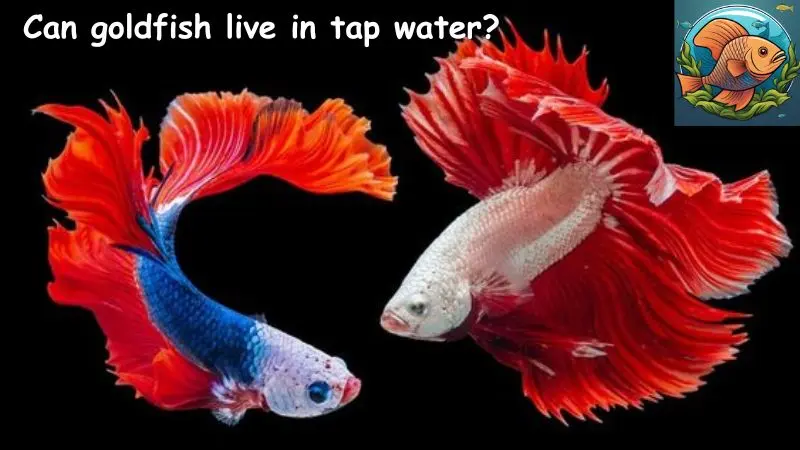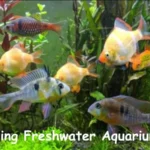fish farming
Can goldfish live in tap water?
The vibrant, shimmering scales of goldfish, their graceful movements, and their playful personalities have captivated humans for centuries. These captivating creatures are a popular choice for beginner aquarists, adding a touch of life and color to homes and offices alike. However, keeping goldfish healthy and happy requires more than just a pretty bowl and a few flakes of food. One of the most common questions new goldfish owners have is: can goldfish live in tap water? The answer, unfortunately, is not as simple as a yes or no.
While goldfish can technically survive in tap water for a short period, it is not recommended for long-term health. Tap water contains various chemicals and minerals that can be harmful to goldfish, leading to health problems and even death. This essay of fishtankmagic.com will delve into the complexities of tap water and its impact on goldfish, exploring the reasons why it’s not ideal and outlining the best practices for providing a healthy environment for these beloved aquatic companions.
Can goldfish live in tap water? The Chemical Cocktail in Tap Water
Tap water, while safe for human consumption, undergoes a treatment process that involves adding chemicals to eliminate harmful bacteria and contaminants. These chemicals, while beneficial for humans, can pose a serious threat to the delicate ecosystem of a goldfish tank.
Chlorine: One of the most common chemicals added to tap water is chlorine. Chlorine effectively kills harmful bacteria and viruses, making it a crucial component of water purification. However, chlorine is highly toxic to fish, causing irritation to their gills, skin, and eyes. It can also disrupt their immune system, making them more susceptible to diseases.
Chloramine: Another common water treatment chemical is chloramine, a combination of chlorine and ammonia. Chloramine is more stable than chlorine and remains effective for longer periods, making it a preferred choice for water treatment facilities. However, chloramine is even more toxic to fish than chlorine, causing severe damage to their gills and internal organs.
Heavy Metals: Tap water can also contain trace amounts of heavy metals, such as lead, copper, and mercury. These metals are highly toxic to fish, even in small concentrations, leading to a range of health problems, including organ damage, neurological disorders, and even death.
Other Chemicals: In addition to chlorine, chloramine, and heavy metals, tap water may contain other chemicals, such as fluoride, phosphates, and nitrates. While these chemicals are generally considered safe for human consumption, they can accumulate in fish tanks, leading to water quality issues and potential health problems for goldfish.
The Impact of Tap Water on Goldfish
The presence of these chemicals in tap water can have a detrimental impact on goldfish health.
Gill Damage: Chlorine and chloramine are particularly harmful to fish gills, the delicate organs responsible for oxygen absorption and waste removal. These chemicals can irritate and damage the delicate gill filaments, impairing their ability to breathe effectively. This can lead to respiratory distress, lethargy, and even death.
Skin and Eye Irritation: Chlorine and chloramine can also irritate the skin and eyes of goldfish, causing redness, inflammation, and discomfort. This irritation can make them more susceptible to infections and diseases.
Immune System Suppression: The presence of chemicals in tap water can suppress the immune system of goldfish, making them more vulnerable to infections and diseases. This can lead to a range of health problems, including fin rot, fungal infections, and bacterial infections.
Water Quality Issues: The chemicals and minerals in tap water can accumulate in fish tanks, leading to water quality issues. This can create an environment that is unfavorable for goldfish, increasing their susceptibility to diseases and reducing their lifespan.
Long-Term Health Problems: The long-term exposure of goldfish to tap water can lead to a range of health problems, including organ damage, neurological disorders, and even death.
Dechlorinating Tap Water: A Temporary Solution
While tap water is not ideal for goldfish, there are ways to make it safer for a short period. Dechlorination is a process that removes chlorine and chloramine from tap water, making it safer for fish.
Dechlorination Products: There are various dechlorination products available at pet stores, such as water conditioners and drops. These products contain chemicals that neutralize chlorine and chloramine, making the water safe for fish.
Ageing Water: Another method of dechlorination is to let the tap water sit for 24 hours before adding it to the tank. This allows the chlorine to dissipate naturally. However, this method is not effective for removing chloramine, which is more stable and requires a specific dechlorinator.
Boiling Water: Boiling tap water for 15 minutes can also remove chlorine. However, this method does not remove chloramine or other harmful chemicals and can actually increase the concentration of minerals in the water.
Important Note: Dechlorination is a temporary solution and should not be considered a long-term alternative to using dechlorinated or purified water. It is crucial to use a dechlorinator specifically designed for fish, as household dechlorinators may contain chemicals harmful to fish.
The Best Option: Purified or Dechlorinated Water
The best way to ensure the health and well-being of your goldfish is to use purified or dechlorinated water.
Purified Water: Purified water, such as distilled or reverse osmosis water, is free from chlorine, chloramine, and other harmful chemicals. It is the safest option for goldfish, as it provides a clean and healthy environment for them to thrive.
Dechlorinated Water: Dechlorinated water is tap water that has been treated to remove chlorine and chloramine. This can be achieved using a water conditioner specifically designed for fish or by using a dechlorination system.
Water Changes: Regular water changes are essential for maintaining a healthy environment for goldfish. It is recommended to change 25% of the water in the tank every week. This helps to remove accumulated waste, chemicals, and minerals, keeping the water clean and healthy.
Choosing the Right Water for Your Goldfish
The best water for goldfish is clean, free from harmful chemicals, and properly conditioned. Here’s a breakdown of the different options and their suitability for goldfish:
Tap Water: Not recommended for long-term use due to the presence of chlorine, chloramine, and other harmful chemicals.
Dechlorinated Tap Water: A temporary solution, but not ideal for long-term use.
Purified Water: The safest option for goldfish, as it is free from harmful chemicals and minerals.
Dechlorinated Water: A suitable option for goldfish, but it’s important to use a dechlorinator specifically designed for fish.
Important Note: Always test the water parameters, including pH, ammonia, nitrite, and nitrate levels, before adding your goldfish to the tank. These parameters should be within the optimal range for goldfish to thrive.
Conclusion
While goldfish can technically survive in tap water for a short period, it is not recommended for long-term health. The chemicals and minerals present in tap water can have a detrimental impact on their health, leading to a range of problems, including gill damage, skin and eye irritation, immune system suppression, and water quality issues.
Dechlorinating tap water can be a temporary solution, but the best option for ensuring the health and well-being of your goldfish is to use purified or dechlorinated water. By providing them with clean, healthy water, you can create a thriving environment for these captivating creatures, allowing them to live long, happy, and healthy lives.












